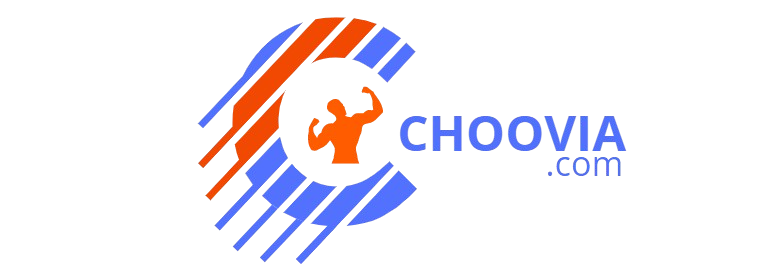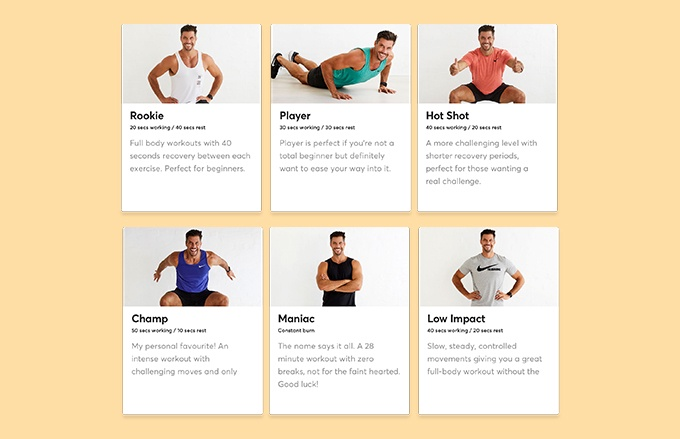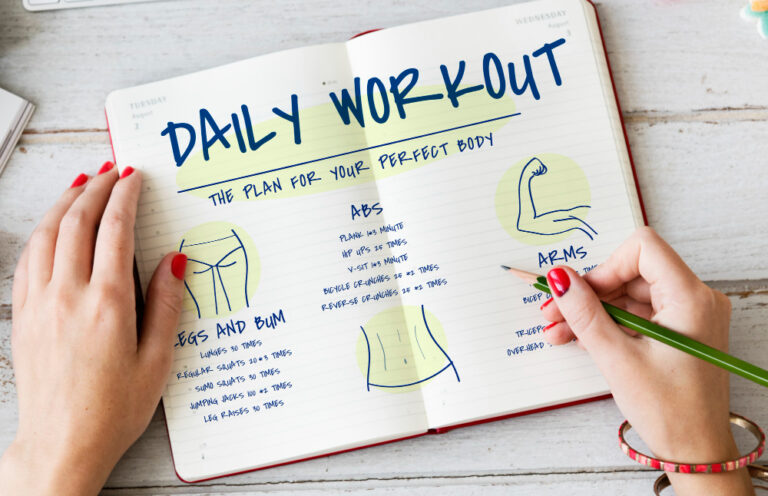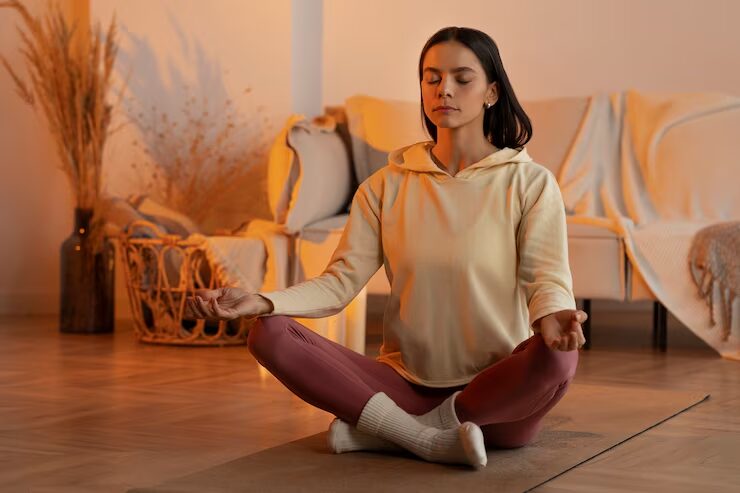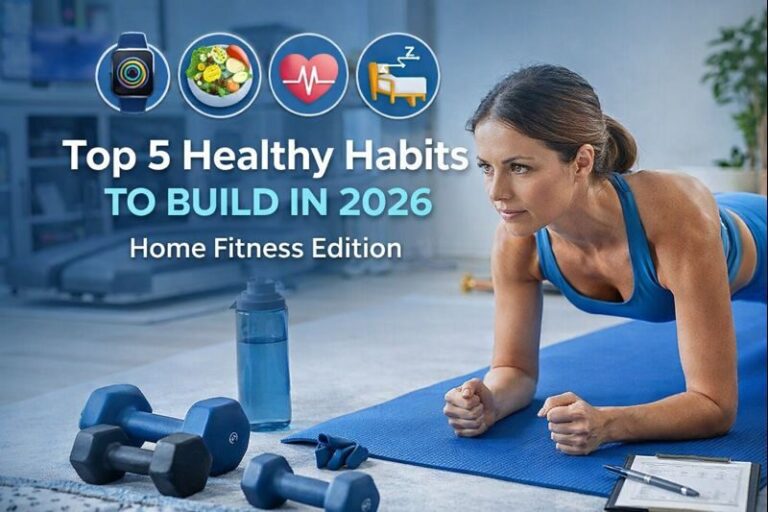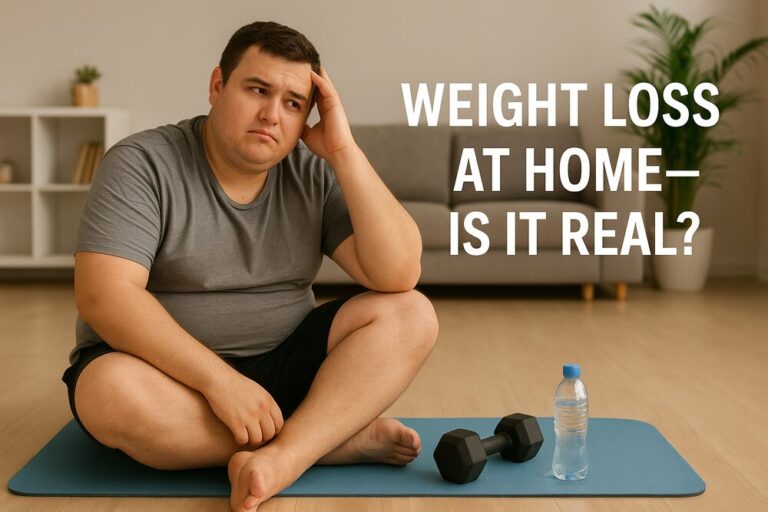Intro: The 8-Minute Home Fitness Challenge
Ready to transform your fitness routine without leaving home? The 8-Minute Home Fitness Challenge is your perfect solution, delivering a quick, effective workout that fits any schedule or fitness level, even for those with bad knees.
No matter where you are on your fitness journey, an 8-minute workout can bring extraordinary results! Not only can it burn calories while building muscle at once; you may even see results faster!
In just eight minutes, this challenge combines low-impact strength, cardio, and flexibility exercises to boost energy, build muscle, and support joint health. Designed for 2025’s busy lifestyles, the 8-Minute Home Fitness Challenge requires minimal space and equipment, making it ideal for beginners or seasoned enthusiasts. Backed by the American College of Sports Medicine, short, high-intensity workouts can improve fitness by 15% in weeks.
Jumping Jacks
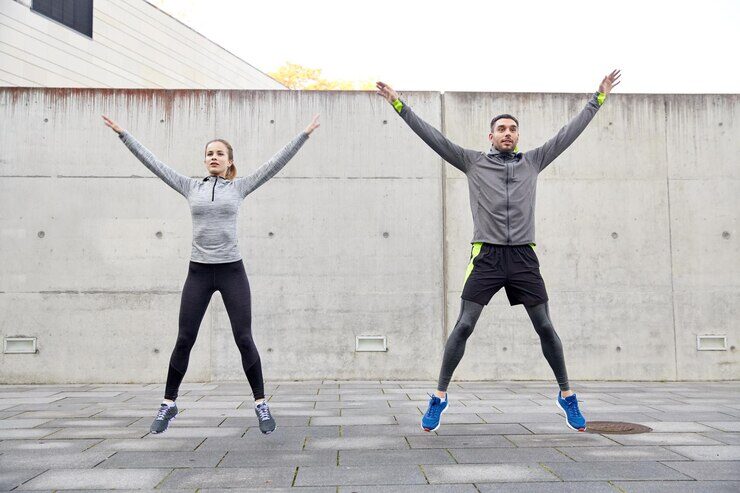
Jumping jacks are an effective and versatile form of total-body exercise, suitable for just about any environment and occasion. From warm-ups and stretching exercises to full workouts and cardio movements, jumping jacks provide a simple yet efficient method for weight loss, heart health and bone strength improvements while relieving stress relief. Furthermore, jumping jacks help develop coordination and flexibility simultaneously!
Jumping Jacks may seem like an elementary school exercise, but don’t be fooled by its simplicity: this total-body move can help burn calories quickly while getting your heart rate up. They belong to the group of exercises known as Plyometrics which combine aerobic and resistance training.
Jumping jacks are one of the best plyometric exercises, working simultaneously to stretch and shorten muscle fibers – an effect which makes them great for both cardiovascular health and strength development. Jumping jacks are particularly beneficial in targeting hip muscles in two directions: abduction (when legs move away from body) and adduction (when legs come together before body).
Jumping jacks are an effective HIIT (High Intensity Interval Training) workout move, helping to quickly increase heart rate and burn more calories faster. They strengthen core and shoulder muscles as well as increase bone density which lowers risk for osteoporosis later on in life.
Tumminello often incorporates jumping jacks into his clients’ metabolic conditioning workouts as a replacement for burpees in one of Horton’s bodyweight circuits. He advises his clients to begin their exercises with a warm-up walk and perform jumping jacks on an even surface (grass or rubber are more effective at absorbing shock than cement or asphalt), such as grass.
Wall Sit-Ups
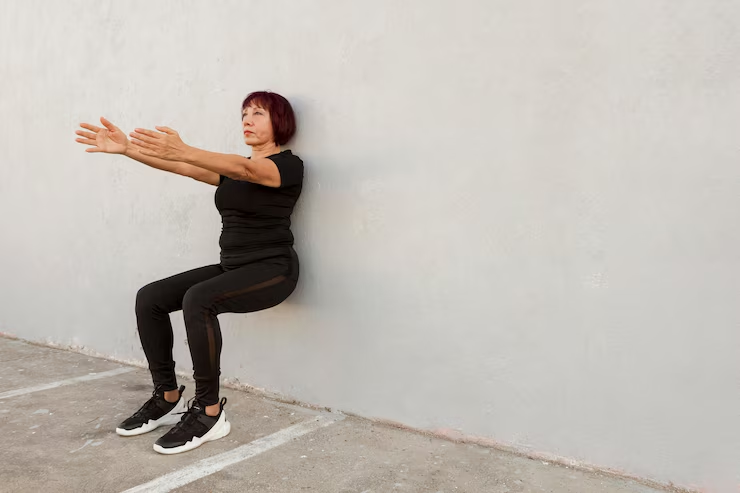
Wall sits are an effective strength exercise designed to strengthen legs and core. They require minimal equipment, adapt to all fitness levels, and can be done anywhere – making them a fantastic alternative for those without access to gym membership or personal training services.
To perform a wall sit, start by standing against a wall with your back against it and feet shoulder-width apart on the floor (sole touching). Slowly lower yourself until either your upper body is parallel with the ground or your knees reach 90-degree angles from the hips; push yourself back up into standing position before repeating this cycle.
Wall sits target the quad muscles on the front of your thighs, which play an essential role in maintaining knee stability and everyday movement such as walking, running and climbing stairs. They also help strengthen your inner thigh muscles and core to promote an upright posture.
Beginners to wall sitting may take some time to develop their strength. Beginners should aim for a position with their thighs roughly at 45-degree angles to the ground; avoid sinking so deeply that your knees extend past ankles, as this puts too much strain on lower leg and glute muscles.
As your strength improves, single-leg wall sits will provide another challenge and increase intensity. To begin with, extend one leg in front of you before returning it back down before extending another – once mastered, increase each set by five second increments until reaching max strength.
Push-Ups

Push-ups are an upper body exercise that targets multiple muscle groups. Not only will push-ups strengthen your chest, but they’ll also work your shoulders, core muscles and lower back – they can even be done anywhere from home to gym floor – there are various variations available to vary muscle focus or intensity or create additional challenges.
Start in plank position, with hands flat on the floor slightly wider than shoulder-distance apart, hands close together, then engage your core as you bend the elbows to lower your chest until it touches the ground before pushing back up through your arms until returning to starting point.
Wall Push-up

Perform push-ups against a wall instead of the floor to lower difficulty and put more focus on arms and shoulders while decreasing strain on neck, wrists, and other joints.
Elevated Push-up Strictly speaking, performing an elevated push-up on an elevated surface like a bench, step-up platform or park bench will increase its difficulty and put strain on your chest, shoulders and triceps that would not otherwise exist.
Diamond Push-up
Begin this variation of a standard push-up by positioning your palms wider apart than usual and lowering yourself until your chin reaches the floor, then pushing back up again to return to starting point. In this variation, more weight must be supported by one arm than normal; placing extra strain on one area of your pecs.
Avoid making common errors such as letting your back sag or arching your hips. Doing this decreases range of motion and wastes energy by not engaging all the appropriate muscles that should be working. Furthermore, try to avoid bouncing and/or stopping too frequently – your goal should be two seconds down, two seconds up, without any breaks at the top or bottom of reps.
Squats
Squats are one of the top all-around lower-body exercises, targeting muscles throughout your legs, core and hips. Squats are essential in building strength across the whole body while opening access to more complex exercises like power cleans or Olympic movements. Furthermore, squats form part of functional fitness training programs by improving the movement patterns needed for everyday activities like climbing up or down stairs.
Squatting is the cornerstone of gym exercises, so it is crucial that you spend some time learning how to squat properly. “Like any worthwhile pursuit,” Austin states, “it takes practice; however, as time progresses it will become easier with each repetition.
To squat correctly, start with feet about shoulder-width apart and your back against a wall. Keep the weight balanced on your toes and maintain a neutral spine–never rounding or arching your back. Hinge at your hips and sink into a squat until knees bend 90 degrees or are parallel with the floor before pushing through heels to push out of it again and squeeze your glutes at the top before repeating this routine for a specified number of reps.
If knee pain occurs while performing squats, this could be a telltale sign that you’re not going deep enough. Research indicates that full squats – knees bent to 90 degrees and traveling along your toes- are optimally tailored towards targeting quads, hamstrings and glutes.
Your workout could also benefit from barbell or dumbbell squats, both of which challenge your core while adding more stability to the exercise. Just make sure you do a comprehensive warm-up consisting of light cardio exercises, bodyweight squats and push-ups before beginning this high intensity interval training workout.
Planks

Planks have become an increasingly popular social media trend and fitness mainstay, offering numerous health advantages. Strengthening core muscles to promote good posture, decrease back pain and build endurance can all be achieved through planking exercises – this 8-minute plank challenge can be done as either a standalone workout or integrated into an overall exercise regime for enhanced results and resilience building.
Planks are an accessible yet efficient way to develop stability and core strength at home. Beginners can start out slowly, holding for four to six rounds of 30 seconds to one minute each before increasing strength to hold longer. Plus, adding variations that focus on abs and core muscles will further challenge you!
Begin on the floor while lying flat on your stomach. Place your elbows directly under your shoulders and step your feet back so they’re either stacked one in front of the other or spread wider apart for additional stability. Tighten abs and squeeze glutes for full-body tension before holding this position as long as you can without your hips sagging to the ground or your head arching up toward your ears.
The side plank is an effective way for beginners to target their obliques (side ab muscles). Once in standard plank position, extend one arm outward with palm flat on ground facing away from you – squeeze chest, abdomen and quads tight to maintain hold until timer goes off – switch arms and repeat!
Conclusion
The 8-Minute Home Fitness Challenge empowers you to achieve your 2025 fitness goals from home, delivering quick, low-impact workouts that suit all levels, including those with bad knees. By committing to just eight minutes daily, you can boost strength, enhance mobility, and support joint health with minimal effort.
Pair this challenge with tools from our “Fit Home Gym Accessories” post, like resistance bands, to amplify results, or explore “Nutrition & Meal Plans” for anti-inflammatory recipes to fuel recovery. Consistency is key—track your progress and join Choovia’s community to stay motivated.
